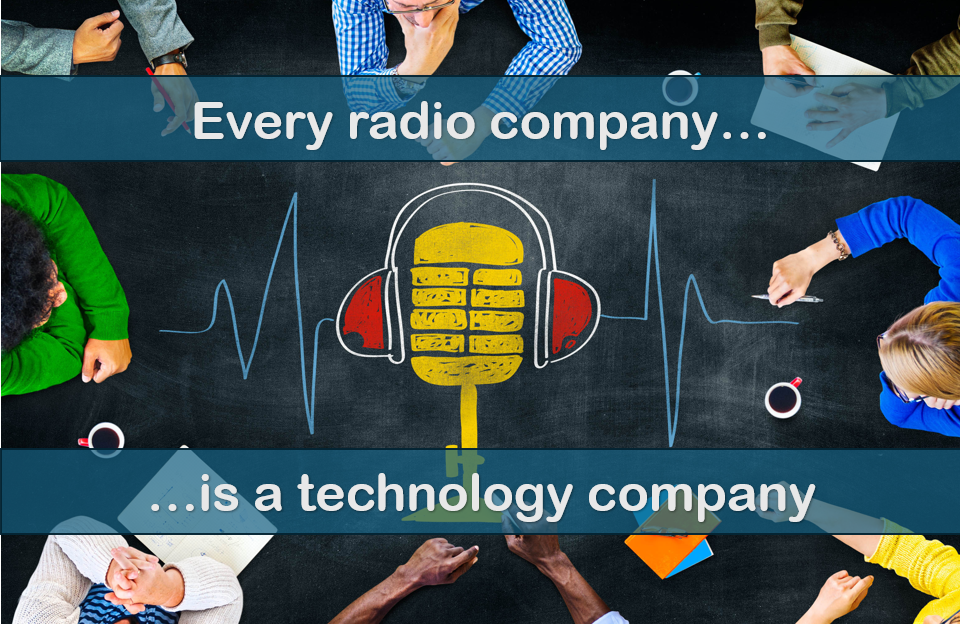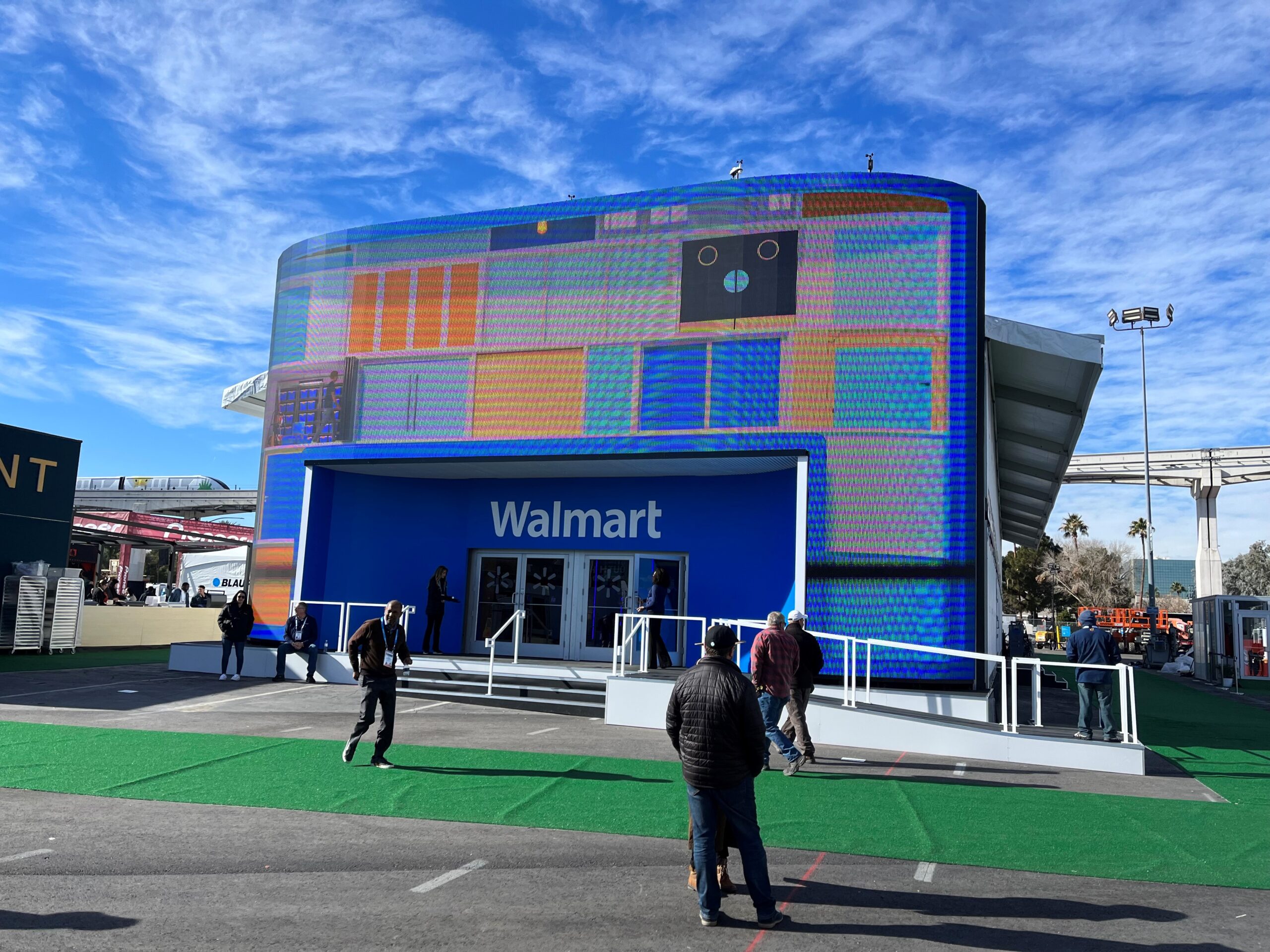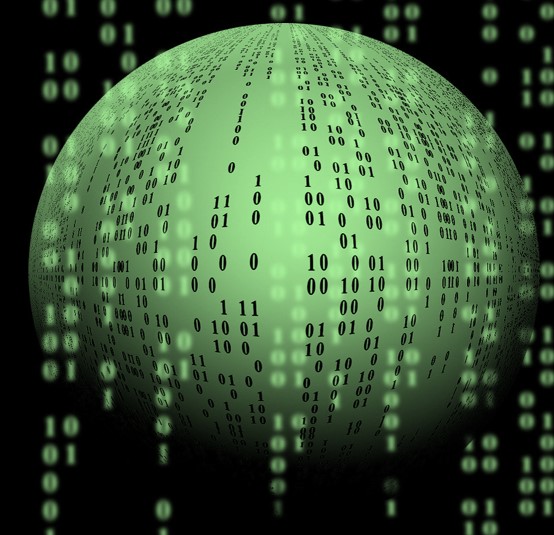
You may have missed a business story last week. Who could blame you? Not a day or two goes by without one company acquiring another. Oftentimes, it’s easy for those on the outside to comprehend the synergy behind the move – why one brand spends a few billion to buy another.
On the surface, that’s how the Walmart purchase of Vizio may have looked to the untrained eye. After all, Walmart sells a lot of TVs, and Vizio is good brand. We’ve got one of their sets in the kitchen, and it looks every bit as good as the Samsungs and LGs in the other rooms of the house.
Still, $2.3 billion is a lot to pay for a television maker. Sure, Walmart’s footprint and scale will get a lot more TVs out the door efficiently. But as Andy Brown explains in AdExchanger, that’s not what this deal is all about.
Talk about deflation. The cost of hardware typically goes down as devices become more ubiquitous. These days you can buy a pretty big television for well under $1,000. I remember what I paid for our “big screen” Sony that lived in the family room for quite a few years – it’s embarrassing given what you can get for a lot less now.
Sony that lived in the family room for quite a few years – it’s embarrassing given what you can get for a lot less now.
In our new Techsurvey 2024, which will be released in a few weeks, we continue to see the meteoric rise of smart TVs in homes and workplaces. This year, we show nearly three in four respondents (73%) now own one, up 4% in just the past year, and 21% since 2020.
Inflation may be a painful economic factor when it comes to food or gas, but with consumer electronics, the margins are typically tight. A look at Vizio’s earnings supports the premise that it is not about selling TV sets. In fact, Yahoo! Finance reports the device end of Vizio’s balance sheet shows a 17% year-over-year decrease in net revenue.
Where Vizio is killing it is in advertising, streaming, and data. Their SmartCast operating system supports Platform+, offering an assortment of content and applications. Year over year, SmartCast’s average revenue per user (ARPU) shot up 15%.
Vizio’s Platform+ net revenue rocketed up 28% YoY, largely on the strength of advertising revenue. And that’s precisely what Walmart CEO Doug McMillan is eyeing in the Vizio deal. It’s also how Walmart is beginning to model itself similarly to Amazon’s advertising expansion, particularly with Prime Video.
But unlike slamming in advertising inventory, Vizio’s Platform+ has focused on the user experience, earning the company a recent Emmy for innovation with their smart TVs.

Yahoo! Finance (and most other analysts) say Vizio’s real value is in its data, particularly significant increases in its active accounts. The company now has 18.5 million active users, up 6% YoY.
The Walmart brain trust is already adept at leveraging data, beginning in the ’90s when their shopping metrics became part of Nielsen’s tracking business. Walmart eventually cut ties with the ratings company, reasoning it could actually generate more value using its data internally and with manufacturers, according to Andy Brown.

We got a closeup look at Walmart at CES 2024, and there are lots of big brains in Bentonville, Arkansas, working on these problems – and their solutions. The Walmart strategy gets even more impressive when you see it in practice.
The Walmart team believes their growth potential may actually be stronger in ad revenue than in selling groceries, home goods, or shoes. Go ahead – read that again.
Brown quotes Walmart CFO John D. Rainey who recently observed:
“More of (our) future profitability is likely to come from selling ads on Walmart properties than by selling everyday essentials.”
Think about that prediction, and then let’s look at the radio broadcasting’s industry’s performance over the past several years. Similar to Vizio’s TV set business, radio’s core business of marketing over the air advertising sales has been far from robust. Digital is on the rise, but continues to be elusive, especially given radio’s having to play catch-up, still struggling to deliver competitive digital products.
A more robust advertising platform could be a game-changer for Walmart, expanding their empire. Logic dictates major suppliers – like P&G, for example – would feel compelled to keep their advertising dollars in the Walmart network to keep everything copacetic. And that could impact other advertising vehicles – like radio.
Audience data might be an area where radio broadcasters might have a chance to play Vizio and Walmart’s game. Sadly, database strategies have been a low priority for most radio broadcasters since their inception in the ’90s. Instead, most radio companies have focused on the ratings – data they don’t own, but Nielsen does.
chance to play Vizio and Walmart’s game. Sadly, database strategies have been a low priority for most radio broadcasters since their inception in the ’90s. Instead, most radio companies have focused on the ratings – data they don’t own, but Nielsen does.
How would the world of radio look different today if companies, clusters, and local stations developed strategic plans to grow their listener databases specifically, and big data in general? Even haphazardly, many stations have amassed tens of thousands of email addresses. Imagine if they would have applied a strategy to database building.
 How big those numbers would be if broadcasters had focused on database growth and development, growing the numbers and adding more rich usage and demographic networks over time?
How big those numbers would be if broadcasters had focused on database growth and development, growing the numbers and adding more rich usage and demographic networks over time?
A look at recent radio station sales show their real estate may be more valuable than their 25-54 shares and last month’s advertising sales. And if the value of ratings is on the downswing, the import of data will only go grow.

Similarly, by thinking of themselves as tech companies rather than radio stations, how could management and ownership extend the value of their brands. Vizio stopped thinking of themselves as TV set companies, and instead focused their efforts on the value of their customers via entertainment platforms, advertising vehicles, and data stores.
Walmart is doing much the same. Most of us may think of them as traditional “superstores,” but after touring the enormous AI-filled “Walmart House” at CES earlier this year, it was abundantly clear they are changing their business model.

They are proving the phrase, “Every company is a tech company,” to be 100% true. Whether it’s the in-store experience and Walmart’s innovative use of AI or it’s the home delivery of ordered goods in rapid, reliable fashion, McMillan and company are showing the world how its done.
Now with the smart acquisition of Vizio, Walmart has added an important component to its evolving business model.
Brown notes that for Walmart, “the Vizio transaction is about building much deeper inroads into household consumer engagement that will ultimately strengthen Walmart’s retail hand and open new revenue streams in advertising. And once that flywheel is set in motion, it’s proven to drive success.”
But it gets better.
Brown predicts that TV (and radio?) measurement companies like Nielsen will be “scrambling for access to a shrinking pool of available viewing (and listening?) data.”
Companies that own their “first party data” could very likely end up in the driver’s seat. Brown believes the media revolution is very much disrupting traditional audience measurement, as innovative, “data-fueled growth” emerges as more meaningful and more powerful.
It also compels broadcasters to give much thought to who is getting their data – Facebook, Tune-In, and other platforms that aren’t very good about sharing. At the end of the day, it is about the assets you OWN – your website, your mobile app, your database.
If this logic path has a ring of familiarity, perhaps it’s because you’ve read it here before. These are the action steps our “digitize your audience” concept has been about.
it here before. These are the action steps our “digitize your audience” concept has been about.
Radio companies that get serious about data – how to aggregate it, grow it, harness it, and market it have a strong advantage over those whose audience shares may still rank them in the top five, while overall radio listening in market after market continues to flag. Your cume need not be a static number on a spreadsheet or a market ranker. It could be a rich metric you can nurture, grow, develop, and market to advertisers who need access to a vibrant, active audience.
Radio – and media – is no longer simply a “create content and monetize it” game. “If you build it, they will come” was a quaint concept in Field of Dreams but no longer applies to modern media marketing.
The power of data in media – entertainment and information – is where the smart money is moving: Walmart, Amazon, Netflix, Facebook, Google. They are all reshaping their advertising and data models for an evolving future.
power of data in media – entertainment and information – is where the smart money is moving: Walmart, Amazon, Netflix, Facebook, Google. They are all reshaping their advertising and data models for an evolving future.
I’m sorry for wonking out on your heading into a weekend, but studying mergers and acquisitions among the big dogs can be an instructive way to see the media/technology world in a more clear-eyed way. That’s why we say going to CES has become less about cutting edge gadgetry and more about innovative media and marketing solutions.
The world is much more than Presidents’ Day sales on big TVs or selling radio 30s and 60s.
Think about it the next time you walk into a Walmart or turn that Vizio TV on.
And think about it the next time you end up stuck in a long radio stopset.
How can radio create solutions for marketers in this changing ad environment?
It’s the data, stupid.
- Lessons For Radio From The Recent Google Home Outage - May 19, 2025
- The Rock Hall’s Most Egregious Snub Yet? - May 16, 2025
- Attention Tech And Entertainment Writers: Don’t Mess With Radio! - May 15, 2025




Fred:
Great post! Data has always been media greatest annuity. Have you see this from Tide? https://tidecleaners.com/en-us
Brands will continually look to ‘mainline’ their audience through connected devices.
Stay Tuned!
So interesting you send this, Michael. I’ve become a Tide Cleaners customer. I love the app and how they’ve systemized their business.
I know this isn’t a grocery industry blog but the grocery is a notoriously small/low/no margin business.
On the other hand grocery stores might have been pioneers in data collection. Before smart phones, remember your shoppers card? Where did all that data go? What was done with it?
So your point about data is spot on.
A great article with great insight and perspective Fred. A must read for every CRO, GSM, Market Manager, Group Head and C Suite exec at NAB/RAB
Much appreciated, David. Hope you’re doing well.